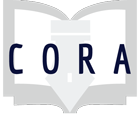Assignment
Where does data come from?
An introductory lesson to finding and understanding data in social sciences.
*Identify appropriate data sources and locate data using disciplinary data repositories
*Recognize that data has value beyond its original purpose including to validate research or reuse by others
*Track a scholarly conversation within sociology through data sources
Information Literacy concepts:
Individual or Group:
Ability Level:
This lesson took place in a sociology research methods course (created with Mary-Michelle Moore). Students were familiar with basic database searching techniques and were getting ready to do their own literature reviews on a sociology topic of their choosing followed by some assignments using SPSS to analyze existing data sets.
After a quick review on finding peer-reviewed journal articles, the librarian asks students "Where does data come from?" to talk about data sources.
Then students split into small groups to explore an article and its accompanying data set in Google Forms. (We have access to ICPSR so the questions ask students about an article that uses a dataset from ICPSR but FigShare or freely available sources could also be used).
After students complete the Google form the librarian pulls the class back together to discuss the answers.
The librarian also pulls up the codebook, questionnaire, and talks about the ways different researchers approach the same data set to answer their research questions.
Students struggle most with "what makes a data set trustworthy." They tended to focus on external indicators such as it's used in peer-reviewed articles, funders, and who the authors are. We also tried to emphasize the quality of the data itself as an indicator (completeness, sample size, questions asked, documentation, etc.).
Then students search for data sets on their research topics as well as other peer-reviewed articles through citation chaining in ICPSR.
"Good Data Examples" from Love Your Data Week were provided as supplemental reading in the learning management system
It can be adapted for other disciplines that use data sets.
Students struggle most with the question, "What makes this data set trustworthy," so we provided some followup up resources on analyzing data sets to the class through the learning management system.

